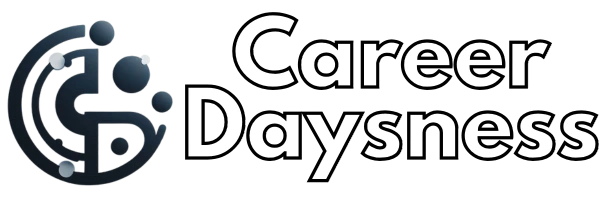
- The Canadian Job Market: An Overview
- Defining CVs and Resumes
- Length and Content: A Major Difference
- Purpose and Usage in Canada
- Formatting and Structure: A Closer Look
- International Considerations for Canadians
- Tips for Crafting an Effective CV or Resume
- Conclusion: Navigating the Canadian Job Market
The Canadian Job Market: An Overview
As Canada continues to be a top destination for skilled professionals, understanding the nuances of the job application process becomes increasingly crucial. One of the foundational elements in any job search is the preparation of a CV or a resume. While both documents serve to represent your professional background, they are not interchangeable. This article will delve into the key differences between CVs and resumes to help Canadians and residents navigate their career paths effectively.
Defining CVs and Resumes
What is a CV?
A Curriculum Vitae (CV), derived from Latin meaning "course of life," is a comprehensive document that outlines an individual's academic and professional history in detail. It is typically used in academic, research, and scientific fields. A CV is exhaustive, providing a full history of your education, work experience, publications, awards, and other achievements.
What is a Resume?
On the other hand, a resume is a concise summary of your skills, experience, and education tailored to a specific job application. It is usually no longer than one or two pages and is designed to make a quick impression on hiring managers. The resume is the most common document used in job applications across various industries in Canada.
Length and Content: A Major Difference
One of the primary differences between a CV and a resume is their length and content. A CV is typically longer and includes detailed information about your entire career, whereas a resume is shorter and more targeted.
CV Length and Content
Since a CV provides a comprehensive overview of your professional life, it is usually two or more pages long. It includes sections such as:
- Personal Information: Name, contact details, and sometimes a photograph.
- Education: Detailed information about your educational background, including degrees obtained, institutions attended, and dates.
- Work Experience: A chronological list of your previous jobs, including job titles, responsibilities, and accomplishments.
- Publications: A list of any books, articles, or papers you have published.
- Research: Details of any research projects or studies you have conducted.
- Awards and Honors: Recognition and awards received throughout your career.
- Professional Memberships: Memberships in relevant professional organizations.
Resume Length and Content
In contrast, a resume is usually one or two pages long and focuses on the skills and experiences most relevant to the job you're applying for. It typically includes:
- Contact Information: Your name, phone number, email address, and LinkedIn profile.
- Professional Summary: A brief statement highlighting your skills and career objectives.
- Work Experience: A targeted list of your most relevant jobs and achievements.
- Education: The highest level of education you have completed.
- Skills: A list of skills that are pertinent to the job.
Purpose and Usage in Canada
When to Use a CV
In Canada, a CV is primarily used for positions in academia, research, and some government roles. If you are applying for a job that requires a deep understanding of your academic and research background, a CV is the appropriate choice. It allows you to showcase your scholarly contributions and professional memberships, which are critical in these fields.
When to Use a Resume
For most job applications in Canada, a resume is the preferred document. It is suitable for positions in business, technology, healthcare, and many other sectors. Employers in these fields are typically interested in your relevant work experience and skills rather than a comprehensive history of your career.
Formatting and Structure: A Closer Look
The formatting and structure of CVs and resumes also differ significantly, impacting how they are perceived by potential employers.
CV Formatting
A CV is usually organized in a chronological order, starting with your most recent experiences. It uses a straightforward format with clear headings for each section. Since it is a detailed document, a CV does not require frequent updates unless you have new achievements or experiences to add.
Resume Formatting
Resumes, on the other hand, can be formatted in several ways. The most common formats include:
- Chronological: Lists work experience starting with the most recent job.
- Functional: Focuses on skills and experiences rather than chronological work history.
- Combination: Blends chronological and functional formats, highlighting skills and relevant experience.
The choice of format depends on your career history and the job you are applying for. A resume should be updated regularly to reflect new skills and experiences, ensuring it remains relevant to the job market.
International Considerations for Canadians
For Canadians seeking opportunities abroad, understanding the distinctions between CVs and resumes becomes even more critical. Different countries have varying expectations for job application documents.
CVs in the International Context
In many European countries, the term CV is used interchangeably with resume. However, the format and expectations can differ. European CVs often include personal information such as marital status and date of birth, which are not typically required in Canadian CVs.
Resumes for Global Opportunities
When applying for jobs in the United States, a resume is the standard document. It is important for Canadians to tailor their resumes to meet American employers' expectations, focusing on accomplishments and quantifiable achievements.
Tips for Crafting an Effective CV or Resume
Regardless of whether you are preparing a CV or a resume, certain best practices can enhance the effectiveness of your document.
Tailoring Your Document
Always customize your CV or resume for each job application. Highlight the skills and experiences that are most relevant to the position. Use keywords from the job description to align your document with the employer's requirements.
Emphasizing Achievements
Focus on your achievements rather than responsibilities. Quantify your accomplishments with numbers and statistics to demonstrate the impact of your work.
Proofreading and Formatting
Ensure your document is free of grammatical and spelling errors. Use a clean, professional format with consistent fonts and spacing. A well-organized document is easier to read and leaves a positive impression on potential employers.
Understanding the differences between CVs and resumes is essential for success in the Canadian job market. Whether you are a recent graduate entering the workforce or a seasoned professional seeking new opportunities, knowing when to use each document and how to tailor it to your needs can significantly impact your job search outcomes. By carefully crafting your CV or resume, you can effectively showcase your qualifications and stand out in a competitive job market.



